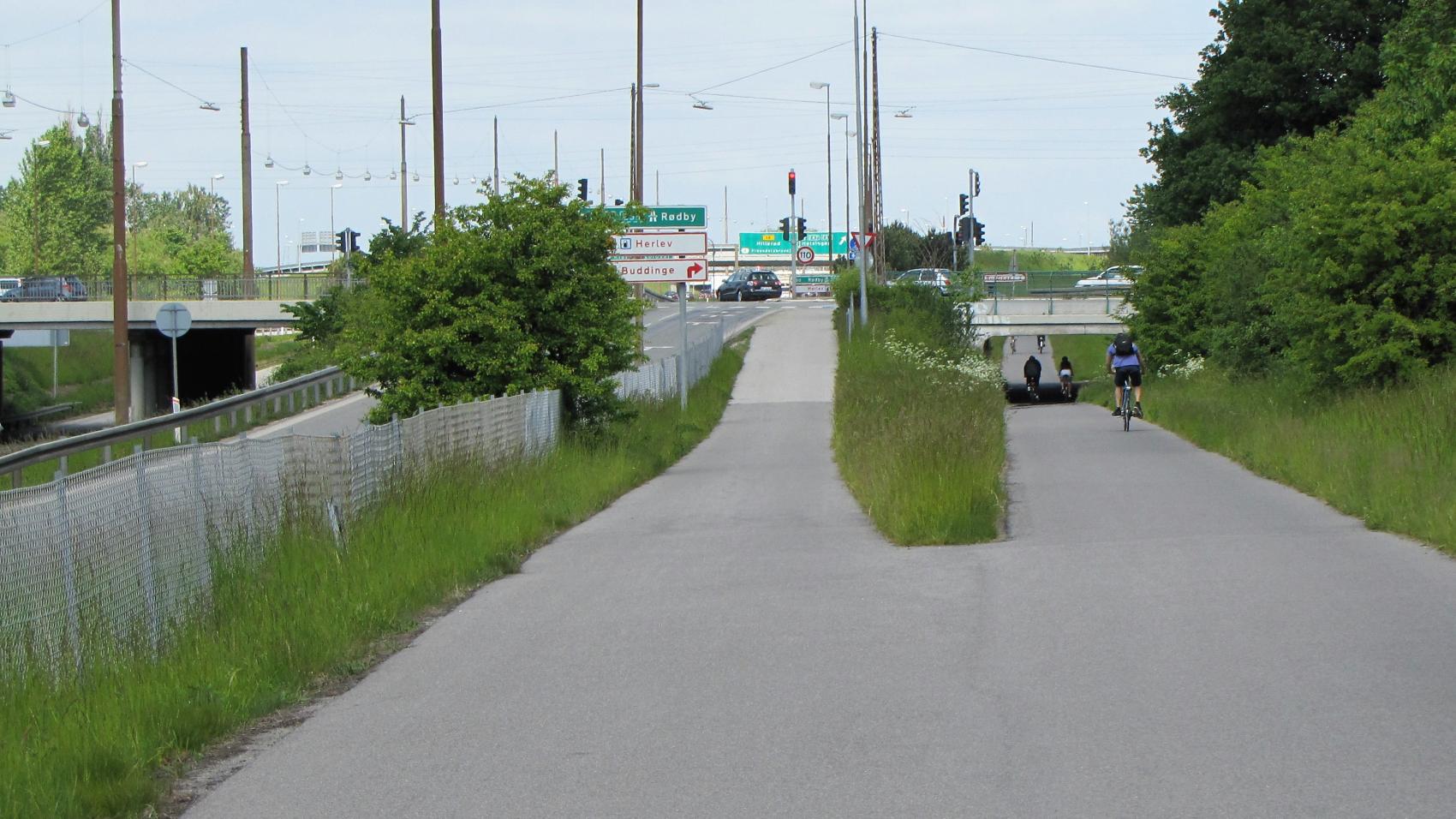
The Farum Route – Cycle Highway C95
The planned F15 cycle highway in the Netherlands shows that the costs of cycling infrastructure can be reduced as much as three times by integrating it in the design of a new motorway. It sounds so good that you might wonder why no one else has done it before. The answer is: it has been done before!
The cycle superhighway C95 connects the centre of Copenhagen with north-western suburbs up to Farum, 20 km away. We have previously discussed several best practices in the central part of the route: filtered permeability, green wave for cyclists, and redistribution of road space. But C95 is also interesting in the suburbs.
For 9 km between Skovbrynet and Frederikssundsvej, the cycle highway follows motorway number 16. Bidirectional cycle paths are provided on both sides of the motorway. Bidirectional cycle paths are not very common in Denmark, but the options to cross to the other side of the motorway are limited and it would therefore be unrealistic to expect cyclists to make detours that would be necessary in case of unidirectional cycle paths.
Interestingly, in most of the interchange areas the cycle paths mirror the alignment of carriageways and ramps for cars: the main cycle paths going straight along the motorway are grade-separated and connected by ramps to cycle paths along the lower-class road.

Cars produce noise, air pollution, and are not nice to look at, so cycling along a motorway has its drawbacks. However, it is still more healthy than driving a car, and when commuting to work, people are often simply interested in the shortest route: most direct, with least interruptions. C95 delivers – it has become the most popular cycle superhighway in Copenhagen. The number of users grew by 68% in recent years, nearly twice as fast as for example on C99, which follows more local roads. The average length of commuting trip on C95 is 15 km, which means that the cycle highway succeeded in making cycling a viable option for commuting on longer distances.
All this cycling infrastructure was built together with the motorway already in the sixties. Both the road number 16 and the cycle paths along it were completed in two stages in 1960 and 1968. A short section of the motorway was upgraded from a previously existing road, which already had cycle tracks on each side before.
Several other high-speed roads with cycle tracks built along them can be found in Denmark. Unfortunately, it is not done very often anymore. The Cycle Superhighway Collaboration is now working with the national government to include cycle tracks into the planned extension of the existing highway.
Not every cycle highway has to follow motorways; for instance, Belgium provides examples of very successful cycle highways like F1 or F3 along railroad lines. But major road (re)construction projects offer opportunities for improving conditions for cycling that should not be wasted and ECF is working to see the integration of elements of cycling infrastructure in such projects as a common EU-level policy.
Regions:
Network/Project Involved:
Contact the author
Recent news!
Upcoming events
Contact Us
Avenue des Arts, 7-8
Postal address: Rue de la Charité, 22
1210 Brussels, Belgium









